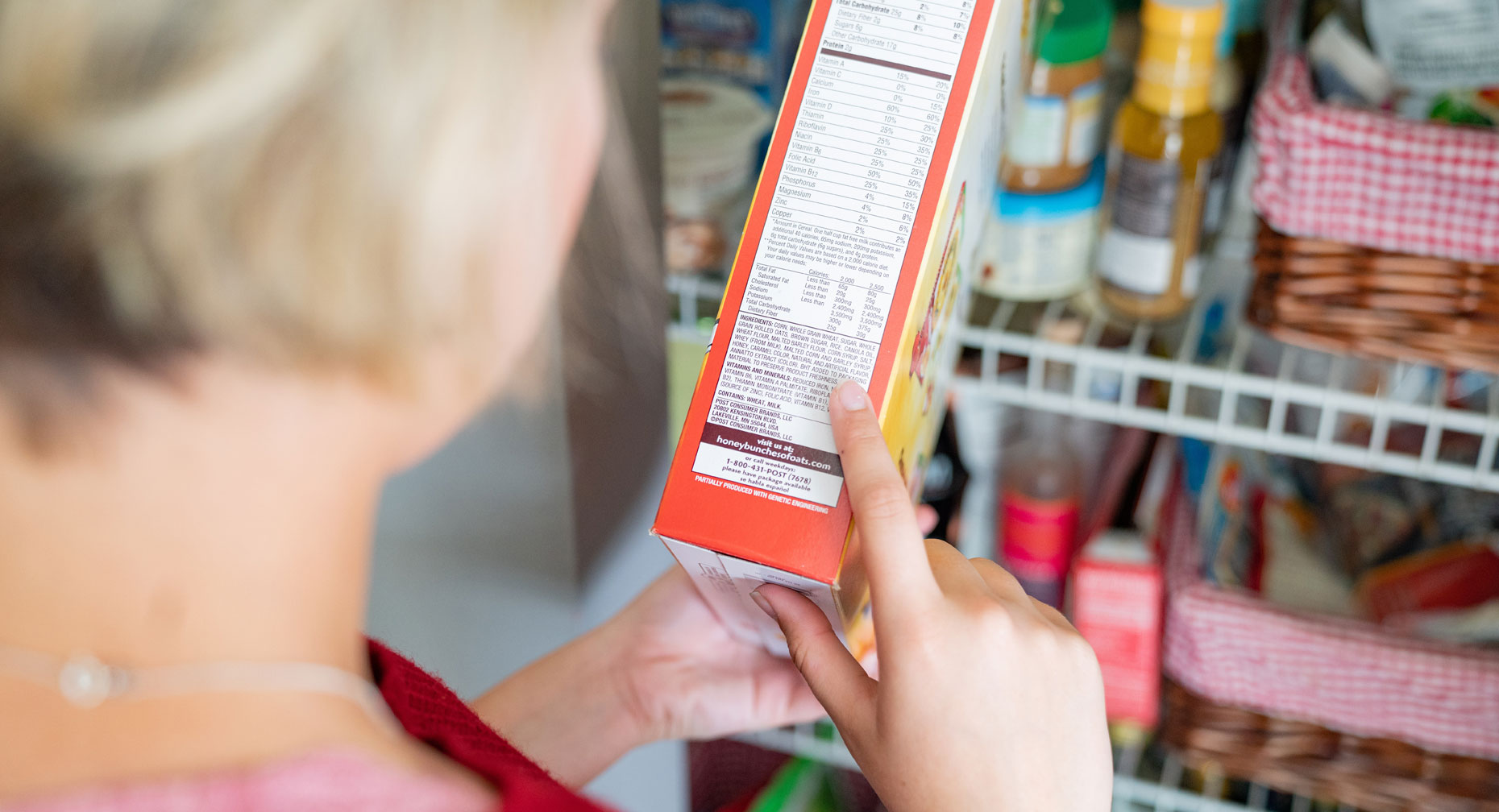How To Read Food Labels: Bite By Bite

Answer a few questions and we'll provide you with a list of primary care providers that best fit your needs.
Nutrition Facts labels on food packages can be a lot to digest in one gulp – or glance.
That’s why Premier Health dietitian Heidi Keppler, RDN, LD, recommends that you take in the information one bite at a time. This can help you make good food choices for a healthier diet, with less stress.
Here’s her bite-by-bite breakdown of a Nutrition Facts label, from top to bottom:
Serving Size
In a few cases, packages contain a single serving. But most contain multiple servings. That means you’ll need to pay attention to the intended serving size, which appears first on the label.
All the numbers on the label are based on the single serving size – not the full contents of the package. If you were to eat two servings in one sitting, you’ll have to double the numbers.
Keppler adds that for someone who has had bariatric surgery, “a serving size may be one-quarter to one-half of the serving size listed on the label.” If you were to eat half a serving, you would divide the numbers by 2.
Family physician Josh Ordway, MD, explains how to read and use a Nutrition Facts label.
Click play to watch the video or read video transcript.
Calories
You have two numbers to keep in mind when it comes to calories. The first is the total number of calories in one serving. The second is how many of the total calories come from fat.
Plus, adds Keppler, “The calories from fat should always be 30 percent or less of the total calories.” To figure out if the food you’re looking at meets this mark, multiply the calories from fat by 3, Keppler says. If the resulting number exceeds the total calories, the food is too high in fat.
Fat
Not all fats are equal. Some are good. Some are bad. And that can make this part of food label reading a little tricky. But Keppler suggests the following to simplify it for you:
- Good fats help lower your cholesterol levels. These are unsaturated fats and omega 3 fatty acids, which will appear on a food label as polyunsaturated and monounsaturated fats.
- Bad fats cause high cholesterol levels, can block arteries, and appear on the label as saturated and trans fats.
- The first number in the fat section of the label is “Total Fat.” This number – representing the combined good and bad fats in one serving – should be less than 5 grams.
Sodium

Sodium is a much simpler matter than fats. The key here is to stay under 2,300 mg of sodium a day – that’s about one teaspoon of salt. To do this, you’ll need to keep track of nutrition labels – and limit your use of salt shakers.
Carbohydrates
The “Total Carbohydrate” number represents all the carbohydrates in one serving – including “Sugars” and “Dietary Fiber.”
“You can subtract the dietary fiber from the total, since fiber passes through your body and is not absorbed into your digestive system,” Keppler says.
“But you can’t subtract sugars. As a general rule, you should limit sugar to 10 grams or less per serving of a food item.”
Protein
When it comes to protein, you should consume 60 to 80 grams of protein daily. An ounce of cooked meat yields about 7 grams of protein.
% Daily Value
The higher the percentage, the more a serving contains of that nutrient. When scanning labels, look for foods with:
- Lower percentages for total fat, saturated fat, cholesterol and sodium
- Higher percentages for fiber, vitamins, iron and calcium – nutrients that most Americans don't get enough of for disease prevention and better health
Nutrition Facts Labels Updated
Changes in Nutrition Facts labels began appearing in 2020. In 2016, the FDA published new rules for the labels. Implementation of the changes was extended to January 1, 2020, for manufacturers with $10 million or more in annual food sales and until January 1, 2021, for smaller manufacturers.
The updated labels look much like the previous ones, but type size was increased for “Calories,” “Servings Per Container,” and “Serving Size,” to make them stand out more – as well as bolding the number of calories.
Also, the updated labels reflect changes in nutrition science. And serving sizes were updated to reflect the amounts of foods and beverages that people are actually consuming – which has increased since the current label rules were published in 1993.
Answer a few questions and we'll provide you with a list of primary care providers that best fit your needs.
Source: Heidi Keppler, RDN, LD; FDA





